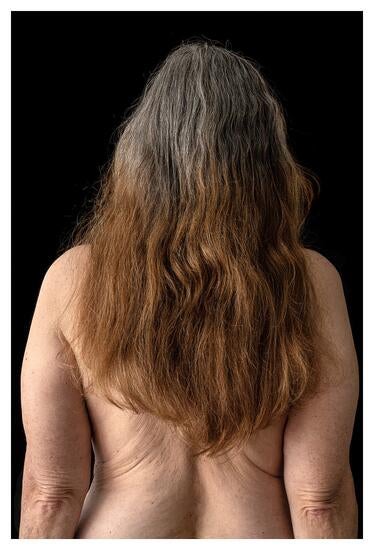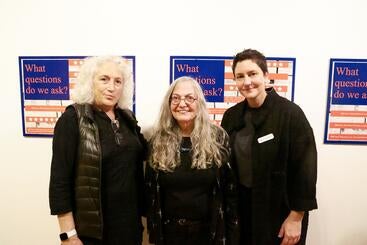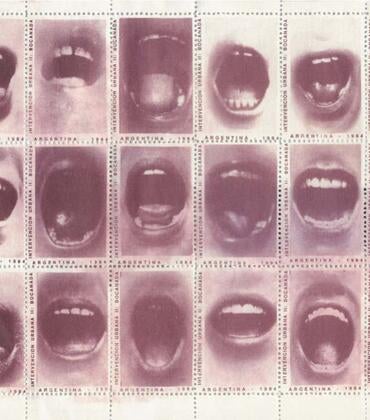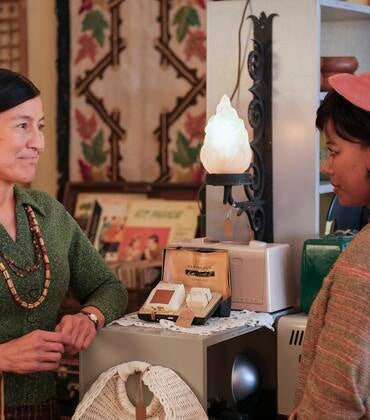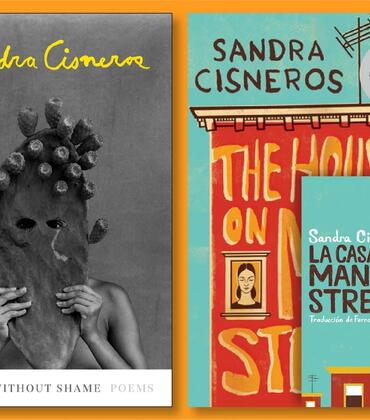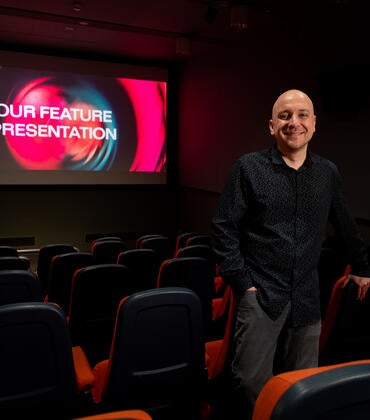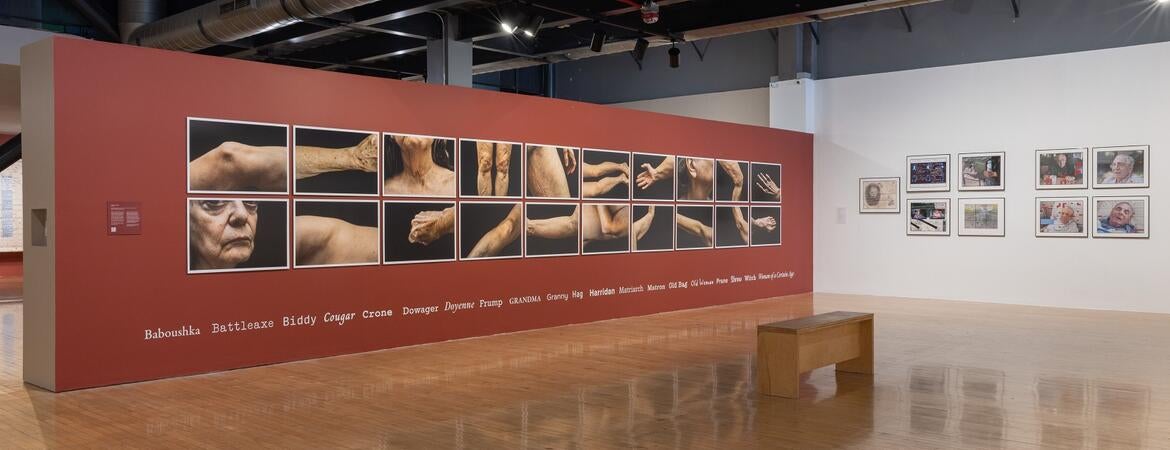
On exhibit until August 17 at the California Museum of Photography is “Gail Rebhan, About Time.” This is Rebhan’s first museum retrospective, having begun her career in the early 1970s as an undergraduate student at Antioch College before entering the MFA program at California Institute of the Arts.
Self-portraits play a central role in the exhibition. The portraits evolve, not just as Rebhan changes with age, but the way she presents herself to the camera over the years and how she utilizes technology in her creative practice.
A series of self-portraits began during the COVID.
“In early middle age, after agonizing about my first gray hairs, I decide to dye my hair,” she said. During the lockdown she decided to let her hair grow out. In one image, her hair, divided between gray and dyed, spills down her naked back. The project is a testament to her honest examination of an aging woman and intrinsically tapping into her lifelong thematic interest of change and time. In total she photographed 17 parts of her body.
In her pandemic self-portraits the accompanying texts are words “referring to ancient women like dowager, doyen, grandma, granny, hag,” said exhibition curator Sally Stein, a professor emerita in the Department of History at UC Irvine.
“She's always using text in a kind of factual understated way to give people a sense of what any given sequence is about,” Stein said.
Stein met Rebhan in the early ’80s. Most color photographers focused on landscape or nature, “but Gail’s work was, sort of in snapshot mode, working serially instead of a single picture,” Stein said. “This was really a new conceptual practice with color.”
Rebhan created sequential images in domestic settings that explored gender roles in the home. For the number of images in a series, she said, “I didn't want only two, which would just be a contrast, or three, which involves some kind of resolution, but I thought four was the minimum number — that way I suggest it goes on forever.”
Rebhan said of one set of images that she used a large-format 4x5 camera, and left it set up for four days. She had focused it on a dish rack: “One of these very common corners of domestic spaces which women often are charged with trying to maintain and create an order and how quickly it gets messed up.”
As she continued to explore domestic life, she used grids to express her sense of order in her photographs. “Appointment books and calendars about the times to pick up kids, doctors’ appointments, but also as a college professor my meetings and professional stuff,” Rebhan said.
Rebhan’s Jewish parents fled Central Europe in the 1930s and came to America. Her father became an International Metalworkers Union leader who met the pope and other world leaders but, in the end, fades away with dementia.
Documenting this experience she scanned dentures and other objects and scanned them.
“They look different, much more real, more three-dimensional,” Rebhan said. “ I used glossy paper on this to make it more personal and more real, vibrant, like they're in a catalog.”
The exhibition also presents her activism, helping the Bethesda African Cemetery Coalition stop the desecration of the Moses African Cemetery in Bethesda, Maryland.
Her 2024 work, “What Questions Do We Ask,” includes images of American flags with census questions demonstrating how the government wants people to reveal information about themselves and how the questions and terminology changed over time.
“Gail Rebhan, About Time” was first conceived for and mounted by the American University Museum-Katzen Arts Center in Washington, DC, in 2023.
A publication for the retrospective is available through Mack Books.
